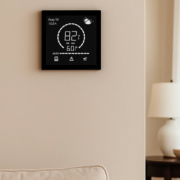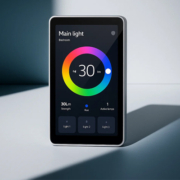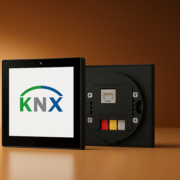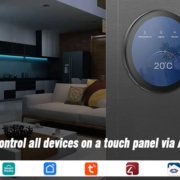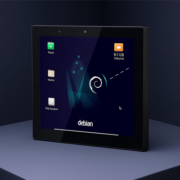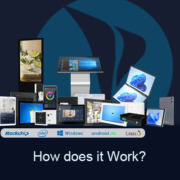What Is Home Automation?
In today’s connected world, home automation is reshaping how we live, interact with our homes, and manage everyday tasks. Whether it’s adjusting the temperature, switching off lights remotely, or unlocking your front door with your smartphone, home automation brings convenience, efficiency, and control into one seamless experience.
But what exactly is home automation—and why is it becoming a standard in modern living?
Definition: What Is Home Automation?
Home automation refers to the use of smart devices, technologies, and software systems to automatically control and manage household functions. It allows users to operate systems such as lighting, heating, air conditioning, security, entertainment, and appliances via mobile apps, voice commands, or centralized control panels.
At its core, home automation transforms a traditional home into a smart home—capable of reacting to your preferences, routines, and environment in real time.
What Can Be Automated?
Home automation covers a wide range of applications, including:
- Lighting: Schedule lights to turn on/off, change brightness or color.
- Climate Control: Automate heating or air conditioning based on room usage or temperature.
- Security Systems: Remotely monitor cameras, lock/unlock doors, get alerts.
- Window Coverings: Open or close blinds automatically based on sunlight or time of day.
- Home Appliances: Control smart plugs, ovens, washing machines, and more.
- Entertainment: Sync speakers, TVs, and home theaters with scenes or schedules.
How Does Home Automation Work?
A smart home automation system typically includes:
- Smart Devices: Internet-connected hardware like thermostats, lights, locks, sensors, etc.
- Control Hub: A central controller (like a smart touch panel or app) that communicates with all devices.
- Connectivity Protocols: Devices communicate using Wi-Fi, Bluetooth, Zigbee, Z-Wave, RS485, or KNX.
- Automation Logic: Rules, timers, or triggers that define when and how devices respond.
These elements work together to create intelligent, personalized, and efficient living environments.
Portworld: Redefining Home Automation Control
While many systems rely only on mobile apps, Portworld offers a more integrated and professional-grade solution: wall-mounted smart touch panels that serve as the nerve center of home and building automation.
Key Portworld Solutions:
- YC-SM08P (8″ panel)
- YC-SM10P (10″ high-brightness IPS touchscreen)
- YC-SM55P (compact 5.5″ controller)
These smart panels are powered by Rockchip RK3566 processors, run on Android OS, and support multiple communication protocols like RS485, PoE, Wi-Fi, Bluetooth, and even custom integrations with KNX and MQTT.
Whether for a private home, a hotel, or a large commercial space, Portworld’s panels offer centralized, reliable, and customizable control.
Why Choose Portworld for Home Automation?
Portworld’s hardware isn’t just smart—it’s built for professional deployment with flexibility for OEM/ODM customization. Here’s why system integrators and developers choose Portworld:
| Feature | Portworld Smart Panels |
|---|---|
| Touchscreen Control | ✔ High-res, responsive panels |
| OS & Platform | ✔ Android, SDK/firmware support |
| Protocol Compatibility | ✔ Wi-Fi, RS485, KNX, Modbus, MQTT |
| OEM/ODM Customization | ✔ Full branding + hardware options |
| Suitable for | Homes, Hotels, Offices, Buildings |
So, what is home automation? It’s the evolution of how we interact with our living spaces—making them more responsive, efficient, and personalized.
And with Portworld’s smart control panels, home automation becomes more than just a convenience—it becomes a reliable, scalable solution tailored to your needs.

